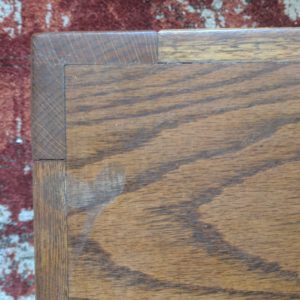Hello
I’d like to refinish a pecan wood table which I purchased about 40 years ago. It has scratches and water marks.
What final size sandpaper grit is needed to ensure there are no scratches when I start staining, etc. The table grain goes mostly in one way with the exception of the edges.
Any advice will be welcome.
Thanks
















Replies
Your question could have different answers depending on what method you are going to use. Power or hand?
I'd like to do it by hand as I don't have an electric sander. Trying to save a little money as this will be a one time project.
If I can't get satisfactory results by hand
then I'll buy a electric sander.
Hello
Can anyone tell me what sandpaper grit I should use as the last one before applying a stain? Don't know how fine it needs to be.
Thanks
The answer in your case is different, because you have a completed piece with grain running at right angles to each other.
If it were an ordinary board with grain in one direction, I would likely be done at 220. On this table of yours, I would use a random orbit sander, and use the finest paper I had, which is 800.
Normally, hand sanding gives the best results. But not going across the grain, which you have to do on your table.
This looks more like oak than pecan to me, but anyway.
I would sand by hand up to 400 before stain if I were to do this from scratch. I would sand the center first (per grit), which will go against the grain on the edge, and then sand the edge carefully. You could try to tape the center with bluetape to minimize cross grain sanding the inner surface when doing the edge.
Couple of questions: first, are you sure the top is solid wood vs veneer or an artificial applique (sometimes very thin)? Of course, with the latter, you will need to be very cautious as it will be very easy to sand through. Second question is whether you will use a chemical stripper or will you sand the finish off. Since you are sanding by hand and if you have solid wood or good sound veneer, I would do a chemical strip. It is messy but, it will save you a lot of work.
That, of course, doesn't answer your question about final grit. I disagree with the above comments that suggest 400 or 800 grit. Particularly with a hardwood, I see no reason to go beyond 220 grit. In your case, the most important consideration is making sure you have progressed through each step of grit size to insure you have all of the old finish off and that you remove all the scratches made by the previous grit. When you have done this, test it by applying some mineral spirits (paint thinner) to the surface. This will temporarily act like a stain and show up any scratches that you missed. If all looks well scratch wize, proceed with your stain after the mineral spirits has dried. Be sure all your sanding goes in the direction of the grain (except when sanding end grain as with the tops of those legs). Sanding cross grain will tear the grain and it will be difficult to sand away the scratches.
I repeat. If you have a veneered surface, be very careful; particularly with the coarser grits.
Couple of questions: first, are you sure the top is solid wood vs veneer or an artificial applique (sometimes very thin)? Of course, with the latter, you will need to be very cautious as it will be very easy to sand through. Second question is whether you will use a chemical stripper or will you sand the finish off. Since you are sanding by hand and if you have solid wood or good sound veneer, I would do a chemical strip. It is messy but, it will save you a lot of work.
That, of course, doesn't answer your question about final grit. I disagree with the above comments that suggest 400 or 800 grit. Particularly with a hardwood, I see no reason to go beyond 220 grit. In your case, the most important consideration is making sure you have progressed through each step of grit size to insure you have all of the old finish off and that you remove all the scratches made by the previous grit. When you have done this, test it by applying some mineral spirits (paint thinner) to the surface. This will temporarily act like a stain and show up any scratches that you missed. If all looks well scratch wize, proceed with your stain after the mineral spirits has dried. Be sure all your sanding goes in the direction of the grain (except when sanding end grain as with the tops of those legs). Sanding cross grain will tear the grain and it will be difficult to sand away the scratches.
Of course, going to a finer grit will do no harm but, it is just unnecessary work. However, going to finer grits will sometimes result in a lighter stain color.
I repeat. If you have a veneered surface, be very careful; particularly with the coarser grits.
Sand to 150 or 180 max with a stain finish. Anything finer only limits the amount of pigment left behind. Sanding to 220 or higher won't really make the project any smoother. Once the topcoat is applied, you can wet sand it with a 1000-1500 grit soft sanding sponge and soapy water.
Of course the biggest issue with refinishing veneered furniture is not sanding through the veneer!
This forum post is now archived. Commenting has been disabled